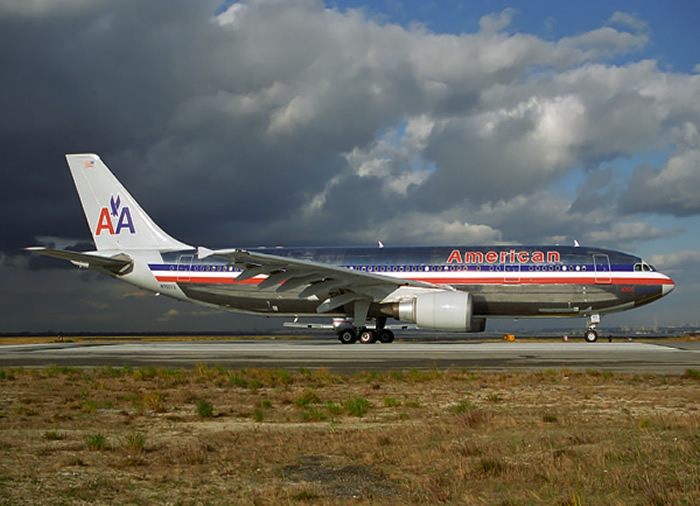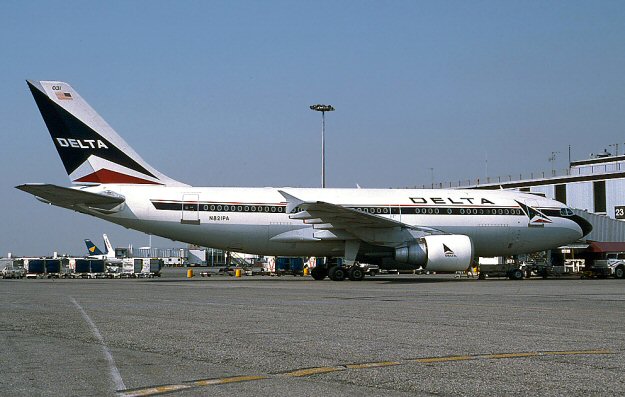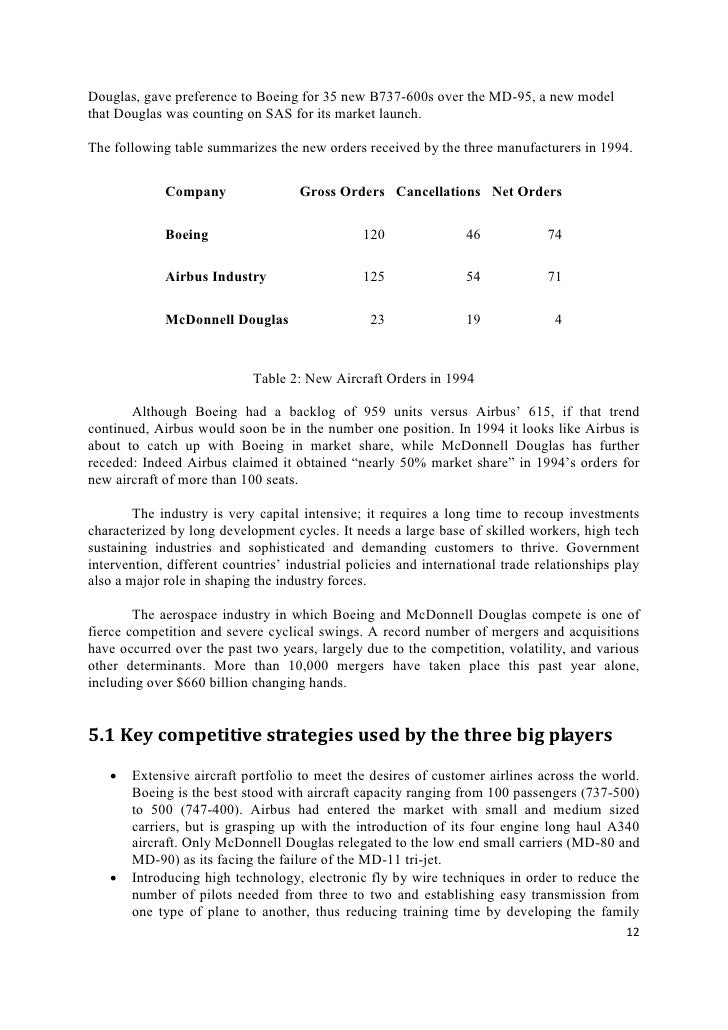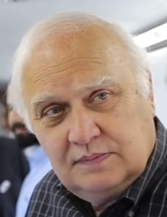Leeham News and Analysis
There's more to real news than a news release.
 Leeham News and Analysis
Leeham News and Analysis
- Does an A220-500 need a new wing and engines? Part 4. July 3, 2025
- GE testing of giant GE9X engine aims for maturity at entry into service June 30, 2025
- Bjorn’s Corner: Air Transport’s route to 2050. Part 28. June 27, 2025
- Parent agency, FAA often at odds as politics outweighs safety June 26, 2025
- Electric Flight and the Ugly Duckling June 25, 2025
Pontifications: The Bottom Line isn’t always about The Bottom Line
June 6, 2016, © Leeham Co.: Sweetheart deals to win strategic aircraft orders are nothing new in commercial aviation.
John Leahy, COO-Customers for Airbus, last week poked Bombardier for its order from Delta Air Lines. Citing a reported airplane sales price of $22m, which Leahy estimated cost BBD $7m per airplane, Airbus’ chief salesman—known for his barbs and quips—said if BBD sold more C Series faster, the company would go out of business quicker.
Set aside for the moment the numbers he cited as unknown quantities. LNC has different figures we’ve reported and in two posts on my column at Forbes, here and here, there are other aspects to the Delta deal that affect economics.
It’s undisputed that BBD took a US$500m charge against the Delta, Air Canada and AirBaltic deals. The second Forbes post explains why. It’s all about the learning curve. Airbus and Boeing know about this: the first A350s are being chalked up to big losses and the 787 has $29bn in production costs. But it’s not to their benefit to acknowledge this when criticizing the C Series deals.
All this is neither here nor there, however. Airbus, Boeing and McDonnell Douglas all have (had) done deals that don’t seem to make commercial sense when key, strategic transactions were necessary.
Airbus and Eastern Airlines
Airbus was a new entrant into commercial aviation in 1974 with the A300B2/B4 series, a 250 passenger, twin-aisle, twin-engine aircraft. It was the first of its kind, from

Eastern Airlines needed new airplanes but couldn’t afford them. Airbus needed a US customer. It loaned EAL four A300B4s for a six-month “test drive.” The unusual deal led a firm orders. Photo via Google images.
a new company that Boeing, Lockheed and McDonnell Douglas didn’t initially take seriously.
Neither did the rest of the world. Government-controlled Airbus won orders from the government-controlled Air France and Lufthansa Airlines. But sales of the A300 were few and far between otherwise, with long, long dry spells.
Eastern Airlines in the USA was flirting with bankruptcy, at a time when airline bankruptcies were unheard of. It had an ancient fleet but no money to buy new airplanes. Airbus North America came up with an idea to loan, as in free of charge, four A300B4s to Eastern for a six-month test drive, so-to-speak. If Eastern didn’t like the airplanes, it could return them. If it did, an order was expected.
EAL liked the aircraft and ordered them. Airbus and engine supplier financed the airplanes. The A300s remained with Eastern, and later its sister company, Continental Airlines, for years to come.
This was Airbus’ first entry into the United States.
McDonnell Douglas and American Airlines
McDonnell Douglas had serious difficulties in selling its new DC-9 Super 80 (this was before the MD-80 marketing name was adopted) in the early 1980s. Sales were

American Airlines had a “walkaway” deal with McDonnell Douglas for 20 MD-80s. AA liked the plane and ordered more than 250. The carrier is only now retiring the fleet. Source: Google images.
so anemic that there was a lot of speculation that the program was doomed to failure.
To kick-start sales and obtain a brand name endorsement, MDC struck a deal with American Airlines for 20 of the aircraft on a five year walk-away. If American didn’t like the airplanes, the carrier could return them to MDC after five years, no questions asked.
The risk to MDC was great at the time. But it paid off. American did like them and ultimately ordered more than 250. Only now is the airline finally retiring this fleet.
Airbus, Boeing and American Airlines

American Airlines A300-600R. Airbus offered walk-away provisions to win the order. So did Boeing for the 767. Photo: Aviation Explorer via Google images.
In the 1980s, American wanted a twin-aisle, twin-engine aircraft for its growing business across the Atlantic and into the Caribbean. Airbus and Boeing squared off with the A300-600R and 767. It was assumed only one would come away the winner.
In fact, American struck deals with both companies. Once again, AA used the walk-away feature as part of the contracts with both companies. American never did exercise the feature and ultimately Boeing won far more orders than Airbus, but the latter did sell 35 A300s to American—a good number at the time.
Airbus and Delta Air Lines
When Pan Am, a major Airbus customer, was on its death spiral, Delta purchased PA’s New York and Frankfurt hubs. Some Airbus A310-200s/300s came with the transaction. These were the first Airbus’ in Delta’s fleet, which at the time operated only Boeing and McDonnell Douglas aircraft.
Jim Bryan, then president of Airbus North America, told his chief salesman, John Leahy, to sell new A310-300s to Delta. Once again, the deal contained the walk-away feature.

Delta Air Lines briefly operated the Airbus A310. The carrier exercised its “walk” option during cost-cutting after the first Iraq war. Source: Ed Coates Collection via Google images.
Leahy sold nine aircraft to Delta. Only this time, the outcome wasn’t what Airbus hoped.
The era was the early 1990s. Iraq invaded Kuwait and the US and its allies came to Kuwait’s defense. Oil prices spiked. None of the world’s airlines was prepared and bankruptcies—especially in the US—became common.
Delta was threatened with bankruptcy and took drastic actions to avoid it. The CEO at the time, Ron Allen, launched a program called Leadership 7.5, a reference to a goal of reducing seat mile costs to 7.5 cents per available seat mile. Drastic cost cutting ensued. Included was a fleet rationalization. The result: all the Pan Am A310s, plus the nine recently delivered new ones from Airbus, were removed from the fleet.
Boeing and SAS
McDonnell Douglas’ commercial aircraft division was hanging on by its flaps. The MD-11 wasn’t selling, the MD-80 and its successor, the MD-90, were struggling and its new MD-95 was in its infancy. MDC’s commercial market share was down to about 7%.
MDC needed a brand name launch customer for the MD-95. It turned to SAS, which had ordered every Douglas aircraft since the DC-3 (except for the DC-5). A deal was struck, but not yet under contract, when Boeing swooped in with a sweetheart offer for the 737-600. The price was never disclosed and my memory of the market intelligence on this had long since faded. What I do remember is that the word on the street was the price was a loss-leader for Boeing, which subsequently sold a large number of 737NGs to SAS.
The Bottom Line
I could go on and on, of course. But you get the picture. There are times when The Bottom Line is about more than just The Bottom Line. Bombardier’s deal with Delta may have been one of them.
And then there’s this
While searching for something else, I came across this document, source unidentified. Compare the statistics with today. Click on the image to enlarge.

Share this:
- Click to print (Opens in new window) Print
- Click to email a link to a friend (Opens in new window) Email
- Click to share on X (Opens in new window) X
- Click to share on Pinterest (Opens in new window) Pinterest
- Click to share on Facebook (Opens in new window) Facebook
- Click to share on WhatsApp (Opens in new window) WhatsApp
- Click to share on LinkedIn (Opens in new window) LinkedIn
- Click to share on Tumblr (Opens in new window) Tumblr
- Click to share on Reddit (Opens in new window) Reddit
Related
Category: Airbus, Boeing, Bombardier, CSeries, Delta Air Lines, Douglas Aircraft Co, Lockheed Martin, Pontifications
Tags: 737-600, 767, A300-600R, A300B4, A310, Air Canada, Air France, AirBaltic, Airbus, American Airlines, Boeing, Bombardier, CSeries, DC-3, DC-5, DC-9 Super 80, Delta Air Lines, Eastern Airlines, John Leahy, Lockheed, Lufthansa Airlines, MD-80, MD-95, Pan Am, Pan American, SAS



Apart from selling aircraft at a net loss to get a new type moving, it is also used when entering a market dominated by competitors.
Other suspect loss leaders could be the JAL A350s, LH 779s or UA 737-9’s.
There’s selling aircraft at call prices, but there’s also selling airline tickets at call prices, to enter new city-pairs in a competitive environment, or to go after market share or force through a higher frequency for amortization of station fixed costs over enough daily flights. Nobody is exempt. The omelett metaphore stands for a strategy panacée : break the eggs if you want to get in ! I’ve bought Gerona-Torp return for twice 14.99 € (738 RYR) in 2007 ?!
A great history lesson Scott, without doing ones own research.
Thank you
@Andrew: That’s what happens when you’re an old fud who has a lot of institutional memory.
It.s not the years it’s the cycles!
Forbes: “The C Series was already the beneficiary of government funding for “launch aid;” Quebec and Northern Ireland (where the wings are made) ponied up about a third of the original estimated development cost, in keeping with WTO caps. Whether the extra $1bn, or $2bn, is compliant is another question.”
– You forgot the Canadian launch aid which was twice as high as Québec. The latter only covered the construction cost of a new building to assemble the C Series.
– This launch aid was legal despite the initial Embraer protest, which has gone quiet since then. My understanding of the rules is that a company is allowed subsidies up to one third of the the development cost. But the development cost that had been projected has since been exceeded and therefore this should give more room for additional launch aid. Anyway, the new money from Québec can be viewed as a business investment rather that a subsidy. This is a completely different form of “launch aid” which may eschew the WTO’s rules. Bombardier has already been sued by Embraer in the past and both parties have gained experience from this. In the end Embraer did not gain anything and they lost a nice Tucano contract from Bombardier. BBD were at the time training Canadian and NATO military pilots and they had placed a large Tucano order with Embraer. When the latter sued, BBD cancelled the order and purchased the Hawk from BAE instead.
Thats a bit jumbled about the cancelled Tucano order.
“Bombardier’s decision to switch from the Embraer EMB-314 Super Tucano to the Raytheon T-6A Texan II turboprop trainer for its NATO Flying Training in Canada (NFTC) programme.
The Canadian company says that it awarded the contract for 24 aircraft to Raytheon after becoming concerned about Embraer’s ability to meet the schedule, which calls for first deliveries in November 1999. Bombardier had earlier selected the Super Tucano and British Aerospace Hawk 100 advanced trainer as the basis for its private-venture NFTC programme.” Flight Global
For more detail of the disputes between both manufacturers ( they both have been found to be doing illegal deals after WTO rulings)
http://business.financialpost.com/news/transportation/embraer-fires-another-shot-across-bombardiers-bow-but-this-time-its-different
“The Canadian company says that it awarded the contract for 24 aircraft to Raytheon after becoming concerned about Embraer’s ability to meet the schedule, which calls for first deliveries in November 1999.”
No one would expect BBD to say that they have cancelled the Tucano order because of the lawsuit. But they did and it would be naive to think otherwise.
From the FT article: “…Bombardier won that one too by again matching Brazil’s interest-rate discount.
The WTO eventually ruled in 2002 that both countries had broken trade rules. It awarded Brazil the right to retaliate against Canada with US$248 million of countermeasures — a significant amount, but one that paled in comparison to the US$1.4 billion in retaliatory rights it had granted to Canada…”
Agreed WTO found both countries were guilty, Brazil did it at a larger scale. Canada just exactly matched Brazil’s interest rate in the latter sales (and got nailed just for those)
Leahy has some good observations and a sharp wit, but I think he gets enamored with himself and then he spews out nonsense.
How much is Airbus making on the A389 these days?
Last authoritative number I read was North of 550 and that was before the wing rib and RR engine issues (those same RR that have magically jumped magnitudes of efficiency over the GP engine)
So to JL I say, Etu Brutai?
Comparing the A380 situation (now profitable) with the C Series doesn’t make a lot of sense. Airbus will survive if the A380 program has to be terminated (with a program loss). Bombardier probably won’t if the C-Series program doesn’t become profitable. If you see the bottle half-full you would say that the C Series sale to Delta is a risk to be taken. If you see the bottle half-empty (as John Leahy does), you would say that a huge discount is not a business case. Time will tell (for the C series and the A380 as well).
I will disagree. When did the A380 become profitable?
At best it is break even and I don’t think its there.
So after 160 made, all of which lost money, its profitable?
Did they make up for the losses on the 160 let alone the whole program investment? Not as bad as the 787 but something like 20 billion into it.
Just like BBD Airbus has lost money on each one they sold. If they had not they would not have sold any.
BBD would survive a C series collapse, not pretty, its called bankruptcy, and you come out healthy.
We are not talking program ramifications, its purely how much you sell for.
JL simply made an ass of himself on this one.
Bombardier might not survive if they didn’t make the sale and break into the market. A cost of doing business…
Of course BBD would survive failure of Cseries. It might have to sell some assets, but it could survive it. But Cseries will not fail, so that is just silly talk.
The A380 is profitable? I highly doubt that…. Oh right Euro Aid for Airbus…. Imagine that. Please remember that Airbus is a government started and owned company that has gotten plenty of subsidies as Scott has outlined. Just as Embraer is another government started and supported company. They actually had to stop flight tests for the KC390 due to lack of government funds if that is not a government company I don’t know what is…. Boeing still flies the KC-46 and Bombardier does the CSeries.
The WTO complaints are just more smoke from the A/B/E companies.
I think we can make an iron tight case that Boeing is also a publically financed company. 8 billion in tax cuts (just one state) is a snoot full of public money.
I was listening to the sport show yesterday and the Oakland Raiders want to move to Vegas.
However, those pesky Vegas folks have to put up the money.
Well of course, billionaires don’t’ want to spend a dime of their own. And we get what out of it?
I guess the old work ethic isn’t the same anymore. Build it and they will come?
Scott: I had to look up DC-5, never heard of it. And I thought I had some odd tidbits floating around in my gourd!
For those interested
https://en.wikipedia.org/wiki/Douglas_DC-5
“Leahy has some good observations and a sharp wit, but I think he gets enamored with himself and then he spews out nonsense.”
Like Al Baker from Qatar Airways John Leahy happens to have a flamboyant personality. In this business that is not necessarily a bad thing. I think Airbus recognizes that and it explains why they have retained his services all those years. After all what is important are the results. At the beginning I did not like JL very much but today he has all my admiration for what he has accomplished. The Europeans in general, and the French in particular, are not very good business people. But Airbus was quick to recognize the talent that JL could bring to Airbus and that is why they moved him from their North American office to France. It’s arguably Airbus’ best coup ever. Until recently the weakest section of Bombardier Commercial Aircraft was the Sales & Marketing department. The priority had been put on controlling the manufacturing costs. But when Alain Bellemare took the helm he immediately spotted this weakness and rectified the situation. And we already see the results. There is no use to have the best aircraft in the world if you can’t sell it.
I too have shifted my view of JL, I still don’t like him though.
Isn’t it racist though to say that Europeans are not good businessmen ?
Look at what VW has done for goodness sake (grin)
I don’t think Airbus would be what it is without JL, but I also think the flamboyance turns into an ass at times and that C series comment is not his finest hour.
Mad Max? Yea that was good.
Everyone: re the Leahy commentary: watch the name calling. See Reader Comment rules.
“Isn’t it racist though to say that Europeans are not good businessmen ?”
– My family ancestors are from Normandy in France and Bremen in Germany, so it would be hard for me to be racist in this case.
“That C series comment is not his finest hour. Mad Max? Yea that was good.”
– This “cute little airplane” might be condescendant, but it’s still a cute little comment. 😉
Ahh said in jest. Until my nephews generation my antecedents they were all from Germany and or decent, you sure would not want me in charge of your business though!
Not sure I would have done a VW, but financially, ugh.
My understanding from what I have read is JL´s strength is mental arithmetic. If somebody makes him a proposal over dinner he can come up with a counter offer nearly straight away, without needing to go back to the office boys. A pretty hard act to follow when you think of the value of production slots, or excess of slots in some cases, cost of different versions and customisation, etc etc.
Not exactly personal, but being a character doesn´t hurt.
This is an interesting point. I also read somewhere that JL has a deep knowledge of each airline he is dealing with and he probably understands his customer’s needs better than the customer himself. Bombardier’s Alain Bellemare recognized the value of this and that is why he hired Fred Cromer who has a very good knowledge of the commercial aviation market. The guy he replaced had a deep knowledge of the automobile industry and that was useful to improve production but was completely useless when time came to sell airplanes. The automobile industry and the aviations industry are two different worlds. In the commercial aviation industry the dealer and the manufacturer are one and the same whereas in the car industry they are entirely separate businesses.
This is probably all best summed up by:
Its a bean counter that will say “we can’t afford to do that”.
Its an expert in the field* that will say “we can’t afford to not do that”.
*be it in engineering, medicine or whatever. Its why I believe if you are in charge of a technical company, you need to have a deep technical background in that field. Carrying over generic “soft-skills” isn’t going to cut it.
Man I agree about 1 billion percent on that one.
And where does the money come from to to these things ? The graveyard is full of failed airplane companies ( or those that ditched the civil aviation side) who had a good product but poor concern for finances. Where would the manufacturers be without the leasing companies or the financial engineering that enables many aircraft to be bought new by non blue chip airlines.
The dog wags the tail. Not the other way round.
If a company is making a complex product, then the person in charge of that company needs to understand as much as possible the various factors that feed into that product.
Large companies have finance departments. It is their role to deal with the finances of the company under instruction from the head of the company.
Financiers never invented anything (well Prime Mortgages aside!)
Yes we need the discipline side, but financier are like I am, not a lot of imagination. I can critique a system once its in place, but the system itself is extremely difficult.
In this case the Chicken (engineers/inventor) came first and then the egg (financer) came next.
I will add that BBD was forced under Canadian accounting rules to disclose the $500 million write off immediately. Airbus and Boeing could have buried this in their books for years.
Good point, I like Canadian laws best, shareholders know what they are getting. I understand that they also have to announce orders straight away, you cant sit on unanounced claims etc